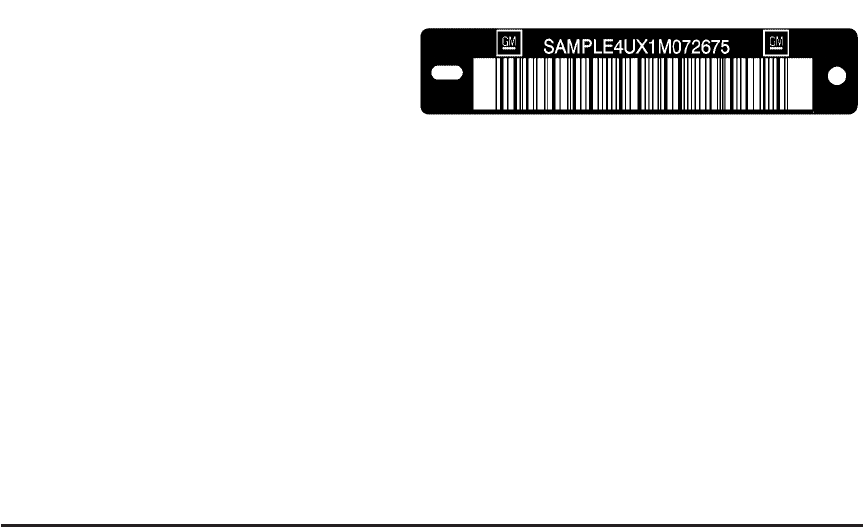
Underbody Maintenance
Chemicals used for ice and snow removal and dust
control can collect on the underbody. If these are not
removed, corrosion and rust can develop on the
underbody parts such as fuel lines, frame, floor pan,
and exhaust system even though they have corrosion
protection.
At least every spring, flush these materials from the
underbody with plain water. Clean any areas where mud
and debris can collect. Dirt packed in close areas of the
frame should be loosened before being flushed. Your
dealer/retailer or an underbody car washing system can
do this.
Chemical Paint Spotting
Some weather and atmospheric conditions can create a
chemical fallout. Airborne pollutants can fall upon and
attack painted surfaces on the vehicle. This damage can
take two forms: blotchy, ring-shaped discolorations,
and small, irregular dark spots etched into the
paint surface.
Although no defect in the paint job causes this, we will
repair, at no charge to the owner, the surfaces of
new vehicles damaged by this fallout condition within
12 months or 12,000 miles (20 000 km) of purchase,
whichever occurs first.
Vehicle Identification
Vehicle Identification Number (VIN)
This is the legal identifier for the vehicle. It appears on a
plate in the front corner of the instrument panel, on
the driver side. It can be seen through the windshield
from outside the vehicle. The VIN also appears on
the Certification/Tire and Service Parts labels and the
certificates of title and registration.
Engine Identification
The eighth character in the VIN is the engine code. This
code helps identify the vehicle’s engine, specifications,
and replacement parts. See “Engine Specifications”
under Capacities and Specifications on page 5-114 for
the vehicle’s engine code.
5-106


















